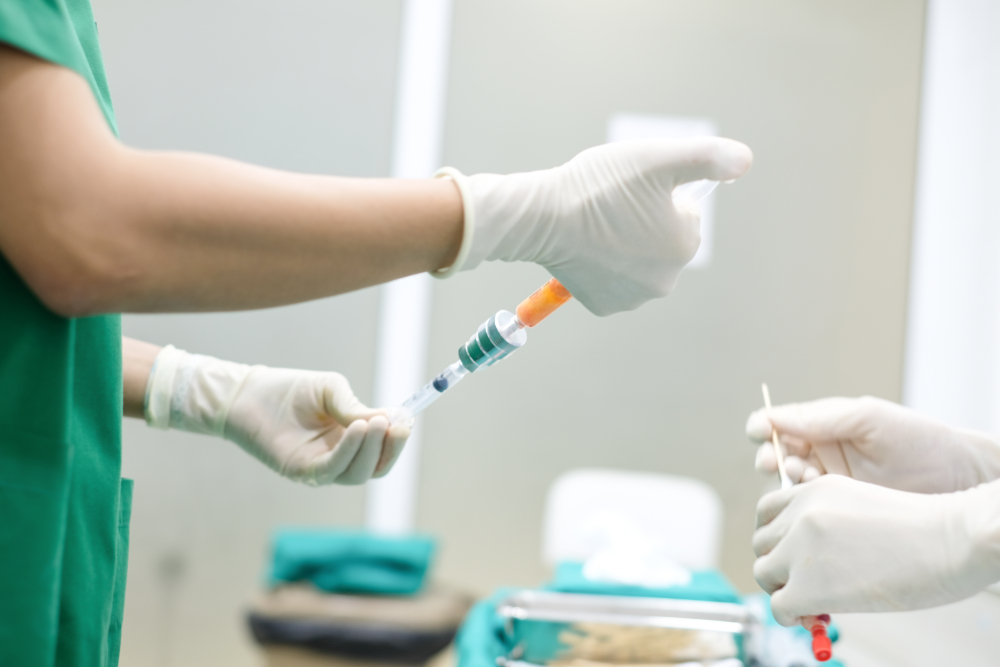A fat transfer procedure takes fat from parts of the body with excess fat, for example, the abdomen, and transfers it to volume-lacking areas such as buttocks, breasts, hands, or face using injections.
This long-lasting, well-tolerated, safe procedure will produce natural-looking results. Thousands of people successfully undergo fat grafting every year and are happy with the results.
What is the Difference Between Fat Grafting and Skin Grafting?
Fat grafting is mostly beneficial for facial rejuvenation. It involves harvesting fat and injecting the fat into different parts of the face. A tired and worn look happens when the temples, jaw, and cheeks lose volume.
During a facial fat transfer in Princeton NJ, the doctor harvests unwanted fat using liposuction from specific body parts and injects into the needed area.
This not only instantly adds fullness, but it also assists in reorganizing elastin fibers beneath the skin. The procedure aims at restoring youthful volumes and alleviating deep folds in the lips and cheeks.
Skin grafting involves moving healthy skin removed from one part of the body and transplanting it elsewhere on the body. Skin grafting is usually done if, due to illness, injury, or burns, a person loses a part of their top protective layering of skin.
Depending on the surface area covered, skin grafts are of two basic types: the split-thickness graft to cover larger surfaces and the full-thickness grafts. In the former, the donor sites, usually the abdomen, thigh, or buttocks, provide the top layer of healthy skin called the dermis, and the dermis’ position is a little deeper. A doctor applies the method when a larger area of damaged skin is being corrected.
Pros and Cons of Fat Transfer
Pros
- Immediately visible results after surgery, not like other cosmetic procedures.
- Fat implants result in fuller bosoms compared to synthetic ones.
- Fat grafting will improve your body’s contour. The body part with the fat transfer appears fuller, thus rejuvenating your appearance. Makes the hips more voluminous, toned, and elastic.
- Plumper lips after lip implants.
- Younger natural look when the volume of temples increases. How long the results last depend on the surgeon and how skillfully he performed the procedure. The results could last a lifetime if done successfully. A person gets smoother, younger-looking skin, and their confidence and self-esteem are significantly boosted after a successful procedure.
Cons
- Scarring. Chest or buttocks silicone implants immediately define and change the body part’s size and shape. Though the results are permanent, so is the scarring. Fat grafting results are, however, semi-permanent. Though scarring fades over time, it will still be visible. The surgeon does their best to keep the incisions small and attempt to hide them in the folds, creases, and natural skin lines. In about a year, the scars will fade.
- The overall shape of the butt barely improves despite an increase in size.
- Risks if rare internal scarring leads to chances of infection. This happens when the conditions are unsterile during the procedure or poorly performed. It is, therefore, advisable to do sufficient research on the destination and surgeon before the process. Ensure the location chosen sterilizes its theatres regularly as well as the equipment used and outpatient procedure rooms. You should also ensure the facility has an infection control protocol.
- The body, at times, can absorb the fat injected, leading to semi-permanent results. A patient may need repeat injections for top-up injections. Around five sittings might be necessary to get the desired results.
- There is a possibility the fat may not be entirely accepted by the site and could lead to less drastic results than expected.
- There is a possibility that the transferred fat may expand or shrink when you lose or gain weight. Avoid weight fluctuations to maintain the results.
Temporary side-effects
- Bruising: Some bruising occurs despite the surgical procedure being minimally procedure. The bruising fades 3 to 4 days after the surgery when the healing process begins.
- Numbness: Tingling and numbness sensations are common in the area treated. The numb feeling happens due to the nerves neighboring swelling after the ft grafting. The nerves will settle in 2 weeks and get better.
- Swelling: Swelling often occurs after a fat grafting procedure. It is likely to be more pronounced if the volume of fat implanted is large. The node could happen at both the area harvested and the site of the procedure. When healing occurs, the swelling tends to go down.
Who Can Undergo Fat Implants?
It is a requirement to meet the surgeon for consultation before the surgery date or sooner. The surgeon will assess whether or not it is safe to undergo the cosmetic procedure. Doctors should consider fat transfers in the following scenarios:
- Facial areas have lost volume or appear hollow.
- When temporary fillers are not sufficient.
- If one desires a cost-effective method.
- If you desire to rejuvenate your face and hands, fill depressions, revise scars, and improve body contours.
- During breast reconstruction, hiding breast implant signs, and healing radiation signs.
Who Should Avoid Fat Grafting?
The following people should not undergo fat grafting:
- Those with immune systems that are weak or are ailing from severe medical conditions such as diabetes and heart disease should avoid the procedure.
- Those allergic to anesthesia may have complications such as allergic reactions, vomiting, and nausea, making them not suitable candidates.
Desired results may not be possible if the fat from any part of their body is insufficient for harvesting.
- Those with a history of abnormal scar formation and healing should avoid fat grafting.
Before going through a facial fat grafting procedure, you should consult a qualified doctor to ensure a safe and efficient process.

Leave a Reply